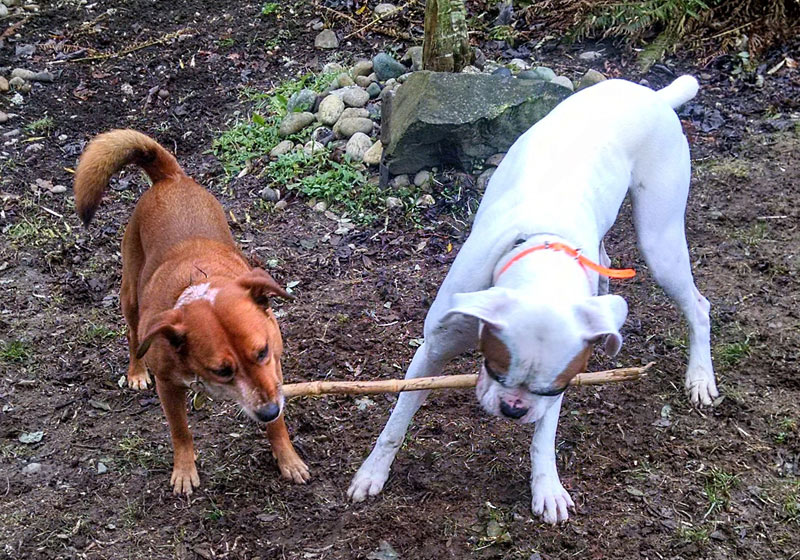If you are a dog owner and dog lover, you can easily conjure up an image of groups of dogs running freely across a field, fetching sticks or balls, rolling in the grass and playing with one another. In fact, that image probably brings a smile to your face – because, for one thing, you love to see dogs having a good time. But you also probably understand intuitively that off-leash time is a great source of exercise for a well-socialized dog.
So how do you know if your dog is appropriate for an off-leash park? Start by asking yourself these four questions:
- What are your dog’s physical needs?
Generally, larger dogs need more active and sustained exercise than small dogs. The average, young and healthy Golden Retriever will need to run around each day for a good, long time, far more than the average, young and healthy Chihuahua, whose needs may be better satisfied with a few daily, neighborhood strolls. Similarly, younger, healthy dogs need more physical activity than older or geriatric dogs. A good rule of thumb is that most medium-to-large, young and healthy dogs need at least 30 minutes of aerobic exercise each day.
- What is your dog’s temperament?
If your dog is frightened of or aggressive toward other dogs, she won’t enjoy an off-leash dog park, nor will she be an appropriate visitor to one, no matter her size, age or general health. Conversely, your Shih Tzu might love to run and play with doggie friends off-leash. (Many local off-leash parks have a separate, fenced area dedicated to small dogs.)
If you’re not sure whether your dog is enjoying the off-leash park, here are a few body language cues to look for:
- Is she moving loosely and wagging from the hips, or freezing up, holding her breath, and tensing? If your dog is making big movements, bounding left and right, or running in circles, she’s probably excited and happy. Dogs that are fearful or uncomfortable tend to be stiff, listening and looking for danger, or hiding.
- Is your dog soliciting play and attention from other dogs? If she approaches or sniffs other dogs and owners, she’s probably more comfortable with social activity. If she’s hiding behind your legs or clearly avoiding other dogs, she’s likely afraid, stressed or nervous.
- Is your dog exploring her environment? If she’s wandering, sniffing, digging, drinking, and looking around, you know she’s relaxed enough to let her curiosity take over. If she’s spending all her time tensely assessing possible danger, she’s unlikely to relax and smell the flowers (proverbially or literally)!
Most importantly, remember that if your dog is fearful, off-leash park time is not only stressful for her, but it’s a danger to herself and to other dogs. A frightened dog is far more likely to attack others or even be attacked by other fearful/aggressive dogs.
- Can you offer your dog alternative exercise?
If your dog doesn’t enjoy or is not appropriate for the off-leash park, you can play with her off-leash in a fully-fenced yard or inside your home with her toys. Or teach her tricks, to exercise both her body and mind! And of course there’s always the good ol’ leash-walk, which can be just as satisfying as off-leash park time for many dogs.
- Do you (and your dog) need a little help?
If your dog loves to run and play off-leash, but you struggle to find enough daylight hours to get her to the off-leash park several times a week, consider calling Sarah’s Pet Care! We offer small and safe off-leash park trips for well-socialized dogs. We’ll pick up and drop off your pup and provide at least one full hour at the park!
Alternatively, if your dog isn’t a good fit for an off-leash park, we offer regular, private walks and playtime at your home, as well.
Remember, a tired dog is a healthy (and happy) dog! So whatever the setting, make sure your dog is getting the daily exercise she needs.
Just call us today!

